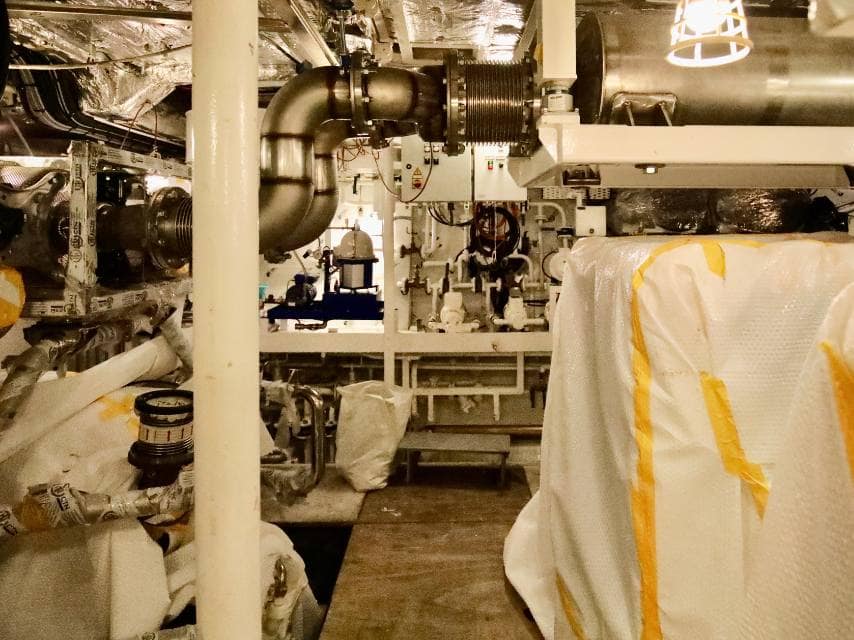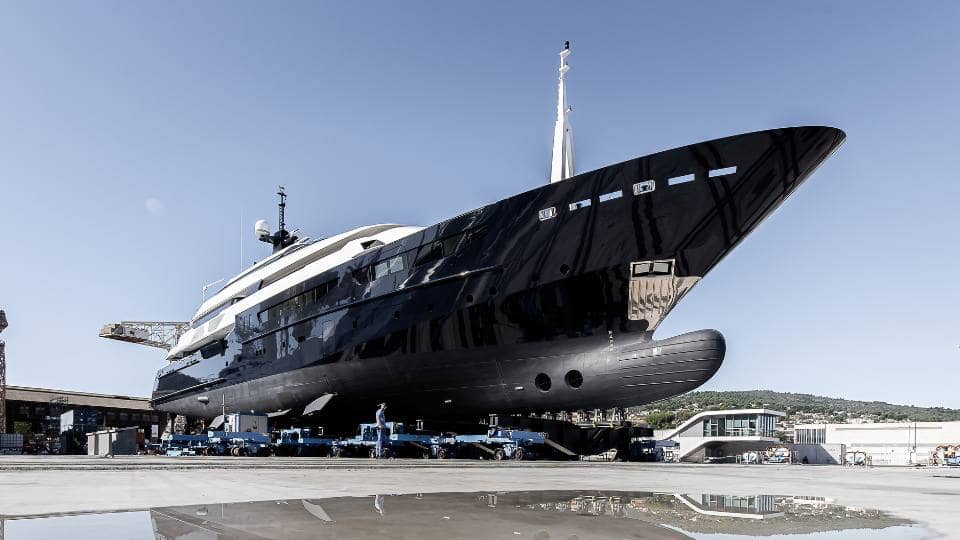Defining the term yacht refit: What it really means & why it matters
The word “refit” has become one of the most overused and misunderstood terms in yachting. Applied loosely, it creates confusion for professionals and clients alike, inflating expectations and undermining trust in what should be a clear measure of a yacht’s condition.
Too often, a yacht that has undergone little more than routine servicing or regulatory checks is described as having been “refitted”. Part of the challenge is that the word is sometimes used as a catch-all to cover any period of work when a yacht is in the yard or contractors are onboard. In practice, these periods may involve only scheduled servicing, addressing maintenance tasks, or making minor cosmetic improvements.
The term can be applied in a broad sense to reflect investment in a yacht, but this blurs the line between maintenance, regulatory compliance, and the kind of transformative projects that genuinely constitute a refit.
The result is that a vessel may be presented as “recently refitted” when in fact it has simply been well maintained. For those making significant financial decisions, the distinction is important. Misunderstanding does not just cloud an individual sale; it erodes confidence in the word itself.
What a refit is not
To restore clarity, it is necessary first to understand what a refit is not. A refit cannot be equated with the manufacturer’s recommended servicing schedule, no matter how comprehensive the work may be. Nor can it be confused with annual maintenance periods that ensure the smooth running of a vessel. These are responsibilities every owner accepts and they form part of the natural rhythm of yacht management.


Class and regulatory requirements such as surveys also fall into the category of expected work. They are essential for safety, compliance, and maintaining the yacht’s operational status, but they are not in themselves refits. They ensure that the vessel remains seaworthy and in line with the standards demanded by authorities, but they do not necessarily represent an enhancement of the yacht’s systems, performance, or long-term value.
Jon Feldman, from the US division of Yacht Management, Business Development & Fleet Operational Support, comments: “Routine maintenance and regulatory compliance are non-negotiable duties of ownership. They preserve the vessel in its current state, but they do not move it forward. A refit, by contrast, involves a level of transformation that goes beyond maintenance and compliance.”
What a refit truly is
Jon Feldman adds: “A genuine refit is a process of replacement, improvement, upgrading and rebuilding. It is about making major capital investments that change the yacht in meaningful ways. To call a project a refit is to imply that the vessel has emerged better than before, equipped to perform at a higher level or compete more closely with newer yachts.”


This can take many forms. It might involve stripping out and replacing main engines and generators or installing a new suite of chillers to improve efficiency and reliability. It may mean relaying teak decks that have reached the end of their lifespan or replacing entire navigation systems with the latest technology. A refit might also involve a comprehensive AV-IT upgrade, extending far beyond swapping out televisions to deliver new capabilities throughout the vessel.
On the interior, a refit can include refinishing original wall coverings, renewing galley appliances, or addressing outdated ducting systems with safer, cleaner, and more accessible replacements. These projects are not driven solely by personal taste. Instead, they represent fundamental improvements that enhance safety, efficiency, and functionality.
“The difference is one of scale and intent. Cosmetic refreshes and minor upgrades are a part of ownership, but they do not qualify as refits. A true refit is a significant step forward that redefines the yacht’s standing and prolongs its life.” Jon comments.
Value and scale
The scale of a refit is often best understood in terms of capital investment. A genuine refit is rarely a small undertaking. It typically represents at least thirty per cent of the yacht’s original cost. In the case of smaller or older vessels, this can mean that the works exceed the yacht’s entire market value. Owners who take this on do so not for immediate resale benefit, but because they are driven by passion, enjoyment, or the pride of ownership.
It is not unusual for owners to invest millions in refits, knowing that they may never see a financial return. For some, the motivation lies in preserving a yacht that has sentimental or historical value. For others, it is the satisfaction of upgrading and modernising a vessel to their own vision.


“Another way of understanding the scope of a refit is to measure it by the number of onboard systems that have been renewed. When a yacht emerges from the yard with new mechanical, electrical, or navigational systems, it has undergone a transformation that cannot be mistaken for maintenance alone. It is this scale of improvement that justifies the label of refit.” Jon comments.
Differentiating periods
Much of the confusion surrounding the term stems from the lack of distinction between different types of yard time. To provide clarity, it is useful to define three separate categories.
A maintenance period is the shortest of these, a time when the yacht is taken out of guest or owner service so that the crew can carry out routine works. Contractors may be involved on a small scale, but the scope remains limited.
A yard period is more substantial. This is when the yacht is placed under the management of a shipyard, often to coincide with survey requirements. It might involve intermediate or special surveys, and the works carried out are usually guided by class or regulatory standards.
A refit period goes further still. This is an extended programme of works, carefully planned and executed, involving major upgrades across interior and exterior areas, as well as mechanical, electrical, or paint projects. It may incorporate survey requirements, but it is not defined by them. The refit period is about transformation, not simply upkeep.
Why clear definition matters
Clarity in defining refit benefits everyone involved in yachting. For buyers and sellers, it provides confidence that the term indicates genuine improvement rather than routine care. For owners, it acknowledges the true scale of the investment they have made. For the industry, it helps maintain standards and ensures that when a yacht is described as having been refitted, the claim has weight and meaning.
“Ultimately, the word refit should not be applied casually. It should be reserved for the kind of significant transformation that is evident as soon as one steps onboard. Those with a good eye can quickly recognise whether a vessel has been properly cared for, and a genuine refit will speak for itself. The quality of the improvements and the scope of the investment leave no room for doubt.” Jon comments.
To discuss your yacht’s future refit and for comprehensive management services, please contact the Edmiston Yacht Management team today.







